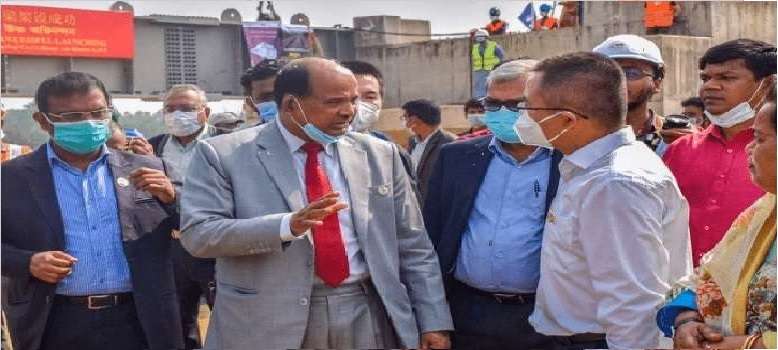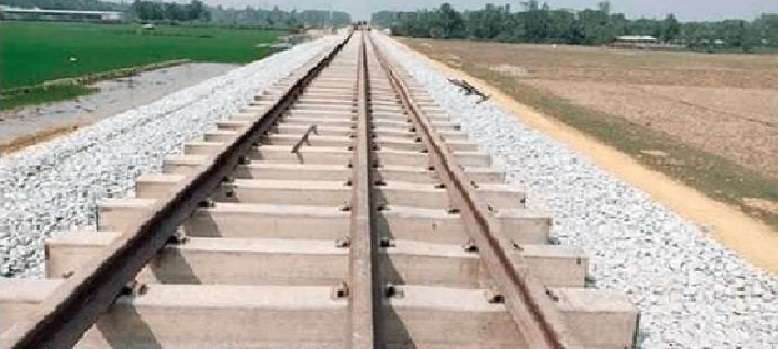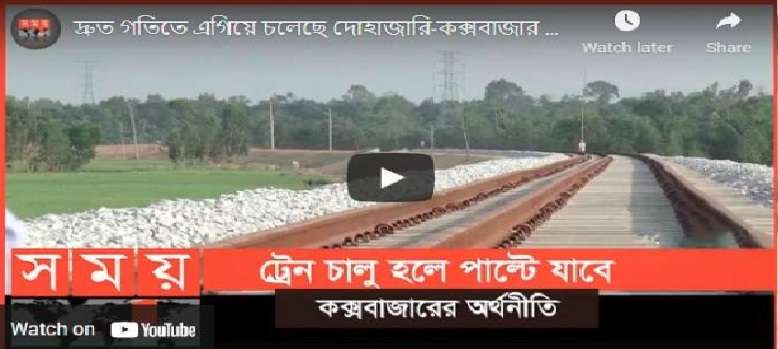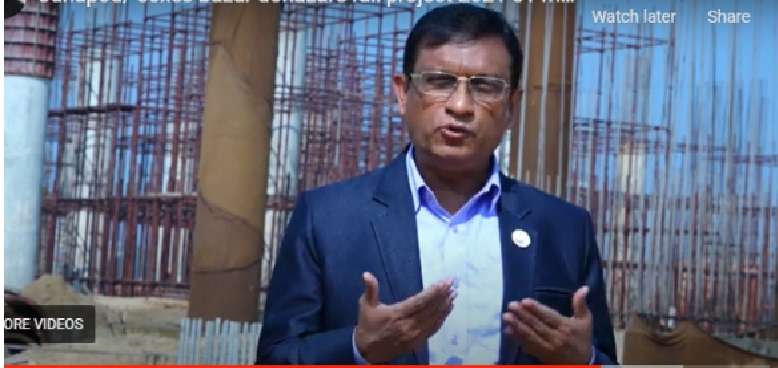A decade after the government launched a groundbreaking initiative, the long-held dream of establishing a rail link between Cox’s Bazar and Chattogram is edging closer to reality.
Prime Minister Sheikh Hasina is scheduled to inaugurate the train service in Cox’s Bazar on Nov 12. And, the vibrant tourist city is abuzz with last-minute preparations for the momentous occasion.
The trial run of trains on the route, initially slated for Oct 15, has been rescheduled to the first week of November. The postponement allows for the completion of repair work on the Kalurghat Bridge, according to project officers.
The construction of rail tracks leading to Cox’s Bazar is nearly finished, although some of the nine new rail stations and certain level crossings remain works in progress.
A single loop line is currently being constructed near each station, despite the project’s inclusion of multiple loop lines.
Bangladesh Railway has decided to focus on completing essential construction work needed for smooth train operations in the month leading up to the inauguration.
Construction of the iconic seashell-shaped station at Jhilonja Union’s Chanderpara in Cox’s Bazar is in full swing. As of now, work on at least two floors of the six-storey station, complete with a passenger waiting room and an escalator, has been finished.
BEACH CITY YEARNS FOR THE ECHO OF TRAIN WHISTLES
Cox’s Bazar was inaccessible by train until the inception of the current project. Originally known as the ‘Dohazari to Cox’s Bazar via Ramu and Ramu to Ghumdhum Single Line Dual Gauge Track’ project, its objective was to establish a 129.58-km railway line.
However, construction of the segment between Ramu and Ghumdhum was eventually halted. Presently, 100.83 km of railway tracks have been completed, linking Dohazari in Chattogram to Cox’s Bazar.
The project has introduced rail infrastructure to several areas, including Chandanaish, Satkania, Lohagara, Cox’s Bazar Sadar, and Ramu within Chattogram. Chandanaish was the only area with pre-existing tracks up to Dohazari, with the rest being developed as part of the project.
Project Director Md Suboktagin expressed optimism about the project’s progress.
“The inauguration of the rail link by the prime minister on Nov 12 will fulfil the long-awaited dream of the people of Bangladesh. This will be the first time the port city of Cox’s Bazar will be connected to the railway network of Bangladesh. We are in the final stages of our preparations and aim to complete it on schedule.”
Asked about a timeline for the start of commercial train services, the railway official did not provide a specific date. Instead, he emphasised the project’s significance in reducing the burden on road travel and ensuring safer journeys.
The initial plan includes train services from Dhaka, Chattogram, and Sylhet to Cox’s Bazar. Multiple trains will operate on the Chattogram-Cox’s Bazar route during the day, and the schedule will be tailored to passenger demand, he added.
WAITING FOR KALURGHAT
Trains travelling to Cox’s Bazar from Dhaka or Chattogram currently rely on the century-old Kalurghat Bridge to cross the Karnaphuli River. The local population has long advocated for a new bridge with railway tracks. This bridge serves as the sole link for residents of Boalkhali and Patiya Upazila to the rest of Chattogram.
The Kalurghat Bridge was closed to traffic for three months starting on Aug 1 to facilitate repair work before the launch of rail service to Cox’s Bazar. However, the trial run scheduled for Oct 15 has been postponed due to ongoing bridge refurbishment.
Md Jahangir Hossain, general manager of the Eastern Railway, reported that the Kalurghat Bridge’s renovation is progressing well, and they anticipate its completion before the inauguration of the Cox’s Bazar rail service.
Project Director Suboktagin noted that the trial run will employ high-quality coaches and engines, and the bridge repair company has set its sights on finishing the primary work by Oct 25, with the trial run scheduled for Nov 1-2.
Initially, the plan was to conduct a trial run on the Dohazari-Cox’s Bazar route, but authorities are now considering a trial run from Chattogram city to Cox’s Bazar once the Kalurghat Bridge is fully repaired.
UNFINISHED WORK
At least three of the nine new stations will not be fully completed in time for the inauguration of Cox’s Bazar rail service. The first phase of the project encompasses the construction of five railway stations, while the second phase involves four more stations.
Bimal Saha, project director of Toma Construction Company — the firm responsible for implementing the first phase, said the Dohazari and Chokoria stations are nearly finished and will be ready for the inauguration.
Satkania, Lohagara, and Harbang stations may not be fully completed, but essential work enabling train operation will be completed, and staff will be on duty at the incomplete level crossings at all times.
Bimal added that all tracks have been installed, and they are currently conducting trials. Construction of loop lines is also in progress, with nearly 99 percent of the track construction completed, according to Project Administrator Ahmed Sufi of Max Infrastructure Ltd, responsible for the project’s second phase.
Sufi is hopeful that the remaining work will be finished within a week. He also mentioned the ongoing construction of the Cox’s Bazar station, assuring that they would meet their targets for the inaugural ceremony in “eight to 10 days”.
Additionally, they have completed construction at Dulahazra, Islamabad, Ramu, and Cox’s Bazar, with loop lines at each station nearing completion.
Temporary management will be implemented at the entry of the Cox’s Bazar station during the inauguration.
The current project includes a dual-gauge railway track from Dohazari to Cox’s Bazar, while the 47-km stretch from Chattogram to Dohazari features a meter-gauge rail track.
The installation work in the Chattogram-Dohazari section, including laying pebbles, has been completed. However, a separate project is required to replace the metre-gauge with dual-gauge tracks to achieve the desired train speeds.
Suboktagin explained that the initial plan was to operate trains on the Cox’s Bazar route at a speed of 60 km per hour, with the ultimate goal of reaching 100 km per hour. Achieving this speed will take some additional time for route preparation.
The Cox’s Bazar rail network project carries a price tag of Tk 180.34 billion, with the Asian Development Bank providing Tk 131 billion and the government the rest of the funds.
Initially approved in 2010 with a deadline of December 2013 and a budget of Tk 18.52 billion, the project’s cost escalated, leading to ADB funding under the Trans-Asian Railway Network.
The revised budget surpassed Tk 180 billion in 2017, and the deadline was extended to June 2022, with further extensions to June 2024 due to construction delays caused by the COVID-19 pandemic.
News Source : BD News24.com




